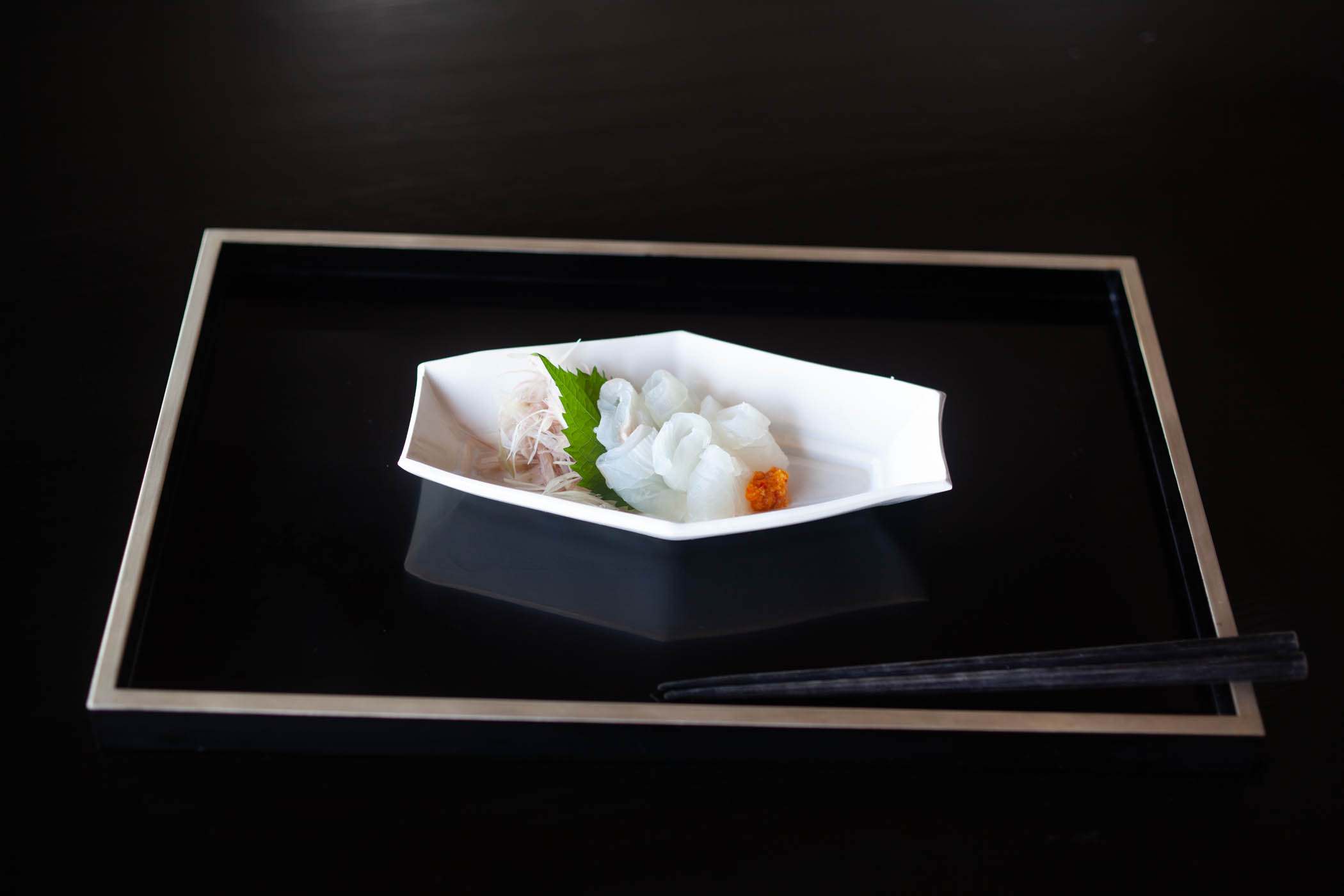The body is soothed and the soul is stirred

Ten months ago, after years of wise guidance by my mother-in-law, a devoted practitioner of elegant and pragmatic home cooking, I took a leap and began studying Japanese cuisine at the next level in earnest with Tsuchiya san, a family friend and former chef at Robata in Ginza. It is a step towards a dream I’ve had for a long time of cooking dishes that reside at the intersection of kateryori (home cooking) and cha-kaiseki (the kaiseki of tea ceremony), two traditions with intimate cross current influences.


The term kaiseki often conjures images of intricately cut vegetables and fish on fancifully arranged trays. It is not a mistake to call this multi-course Japanese haute cuisine kaiseki, but it is important to delineate between two marked styles with the same name. One style of kaiseki, positioned in the realm of restaurants, is designed to entertain and impress, another style of kaiseki originates in the tearoom where extravagance and ornamentation are eschewed in favor of refined simplicity and subtle beauty. This is the kaiseki I fell in love with and dream of cooking well.
Both models of kaiseki rely on a prescribed order of courses prepared and presented according to established guidelines. But the articulations are so vastly different that it’s surprising how few, Japanese nationals included, understand them as two distinct models. The problem originates in linguistics, one word written two different ways. Kaiseki rooted in the traditions of tea is written with kanji characters that represent bosom and stone. The choice of these characters to represent the simple meal served before tea is attributed to tea grand master Sen no Rikyu in reference to Zen monks who would fold warm stones into the front of their robes to ward off hunger while sitting zazen. Though called kaiseki, it is better distinguished as cha-kaiseki or tea-kaiseki for differentiation. The haute cuisine version is also pronounced kaiseki but the characters are a more literal reference to a seat at a gathering. Though this kaiseki draws influence from the simpler traditions of cha-kaiseki and shojin-ryōri (Buddhist temple cuisine), it is also influenced by two far more decorative culinary traditions, yusoku-ryōri of the 9th century imperial court and more directly honzen-ryōri, the ceremonial banquets of the 14th century warrior class. Its traditions prescribe a level of flair and ornamentation that is avoided in cha-kasieki.


When I interviewed Kazuko Gotou, of the family that helms the Mushakouji school of tea, one of the three lineages descended from Sen no Rikyu, she mentioned that though the aesthetic differences between kaiseki and cha-kaiseki are striking, the main distinction originates in the relationship between host and guest. Kaiseki restaurant chefs cook to please the diners of the day, whomever they may be, and lavish their patrons with elaborate meals. Cha-kasieki is a more personal offering tailored to invited guests. It requires a devout consideration of the season, the mood, and the guest’s experience, as the host seeks to create an inspired sense of harmony and satisfaction.
In Japan, food is imbued with symbolism that speaks to a way of being, a way of thinking. A respect for nature defines Japan’s spirituality and its cuisine and the two are inextricably linked. The Japanese reverence for seasons, for the unfurling of cherry blossoms or the reddening of the maple tree, may seem on the surface like sentimental dalliances. But such notions are born of Shinto, Japan’s indigenous faith. Shinto identifies the natural elements, the wind and the rain, the buds and the blossoms, as the way of the gods. The cuisine promotes the anticipation and blessings of micro-seasons, insisting on simple treatments of perfectly seasonal ingredients. Through the food one acknowledges and appreciates this way of the gods. In the way of eating here I’ve found a way of living that feels inspired, adventurous, honest, and balanced. When a cook applies simplicity of design and preparation, simplicity being the hardest to master, to honest ingredients, the eye and mind are soothed while the soul is stirred.


Seeing my efforts to learn to cook at a new level that pushes the daily dishes of kateryori towards the realm of cha-kaiseki, Hanako was motivated to make a collection of modern washoku pottery for me to use. It was so much fun chatting about shapes, sizes, and glazes and to cook especially for this collection, which she has sweetly named Prairie’s Collection. I’m now more convinced than ever that post-covid we’ll have to start a Mirukashi dinner series here at our home.
Prairie’s Collection is now available over on Monohanako.






